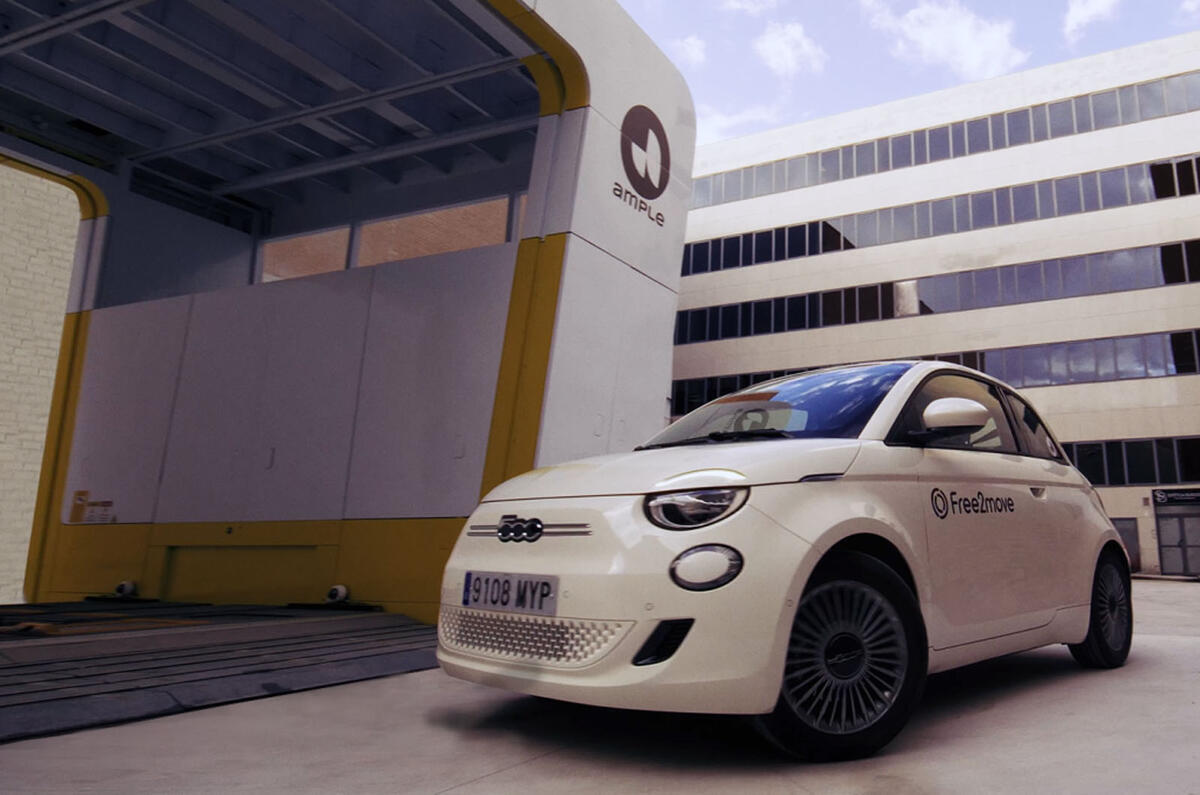Pull into a petrol station with an electric Fiat 500e in Madrid, Spain, and you could soon be filling up almost as quickly as you would in the old combustion-engine version.
This magic is down to a conversion of the EV carried out for the FreetoMove car share business of Stellantis, Fiat's owner. The conversion itself is the work of start-up Ample, which has reinvented the idea of battery swapping to make it more accessible, and it is now being launched in Spain.
The reason it will probably happen in a petrol station is because two of Ample’s early investors were Shell and Spanish oil company Repsol, both of which were casting about for fresh uses for hundreds of fuel station sites in the EV age.
Many have touted the idea of battery swapping, including Tesla during its early days. So far, however, only Chinese electric car company Nio has made a decent go it, with 3408 so-called Power Swap stations globally relieving the need of owners to charge their cars.
But Nio’s solution has a key drawback that Ample reckons it has overcome. “One of the key historical challenges is what they call pack-level swapping, where you swap the whole battery pack,” Juan Spiniak, head of product at Ample, told Autocar at the recent Move event in London. “That requires standardising the battery pack across all vehicles. And that's really, really hard.”
Ample’s solution is to retrofit existing EVs so they can accept its modular battery packs. The company reckons it can engineer an adaptation for an existing car in around three months and the intention is that eventually the changes can be implemented on the production line, rather than aftermarket.
Vehicles adapted so far include the Nissan Leaf and Kia eNiro in the company’s home city of San Francisco, the US, in a partnership with Uber, as well as a Mitsubishi eCanter truck and dinky Minicab-MiEV delivery van on trial in Tokyo.
So far, Stellantis has handed over 21 Fiat 500e EVs for Ample to convert in Madrid and that will rise to 100 “very soon”, Anne Laliron, head of tech research at Stellantis, said at the Move event.
“What is amazing is that we don't have to change so much in the car because it's easy to integrate. We don't need to touch the platform,” said Laliron.
The other innovation is that Ample can install whichever battery chemistry it likes into its pack modules and the car is programmed to adapt, meaning the company can offer a cheaper solution such as sodium batteries when they become viable. Splitting the modules into three, meanwhile, allows users can decide how many they need for the journey they plan.






Add your comment